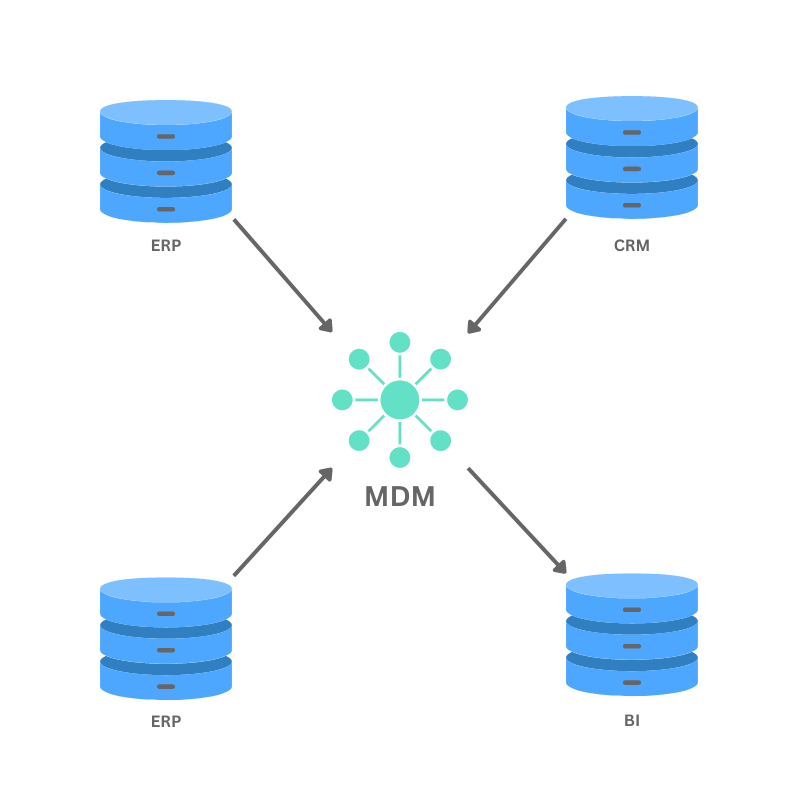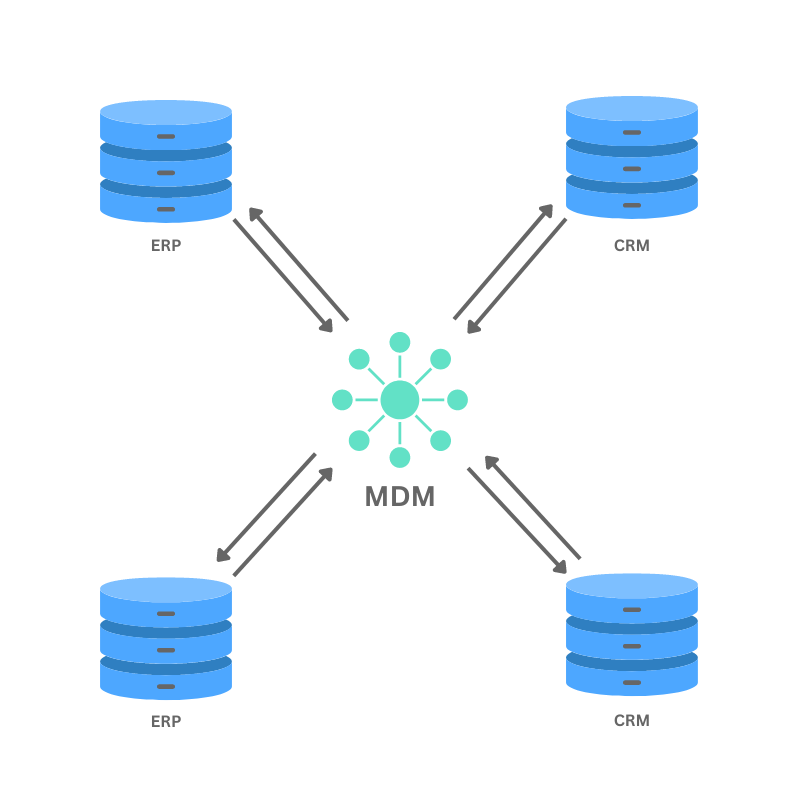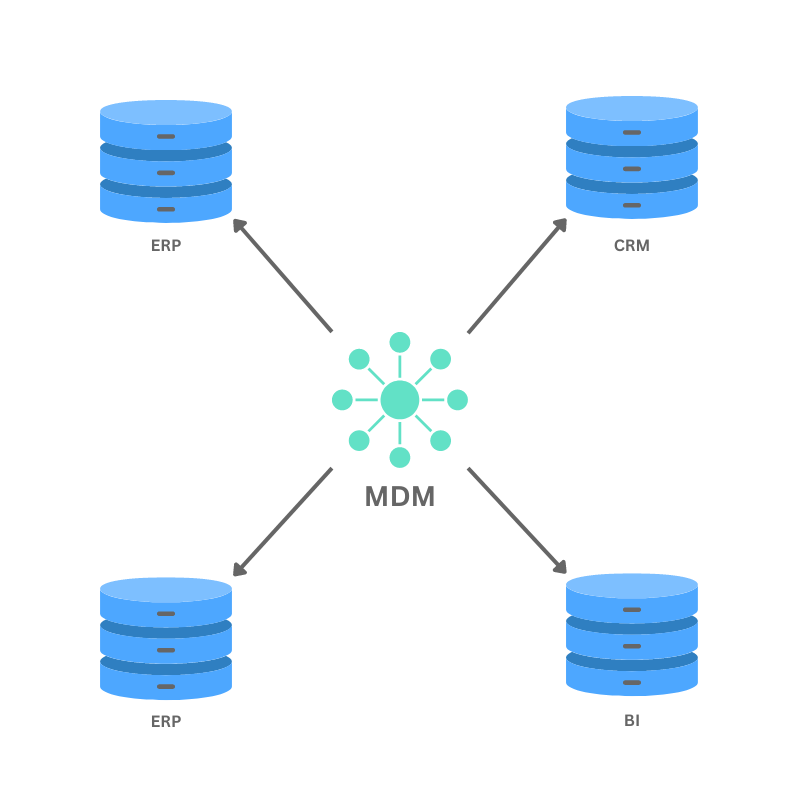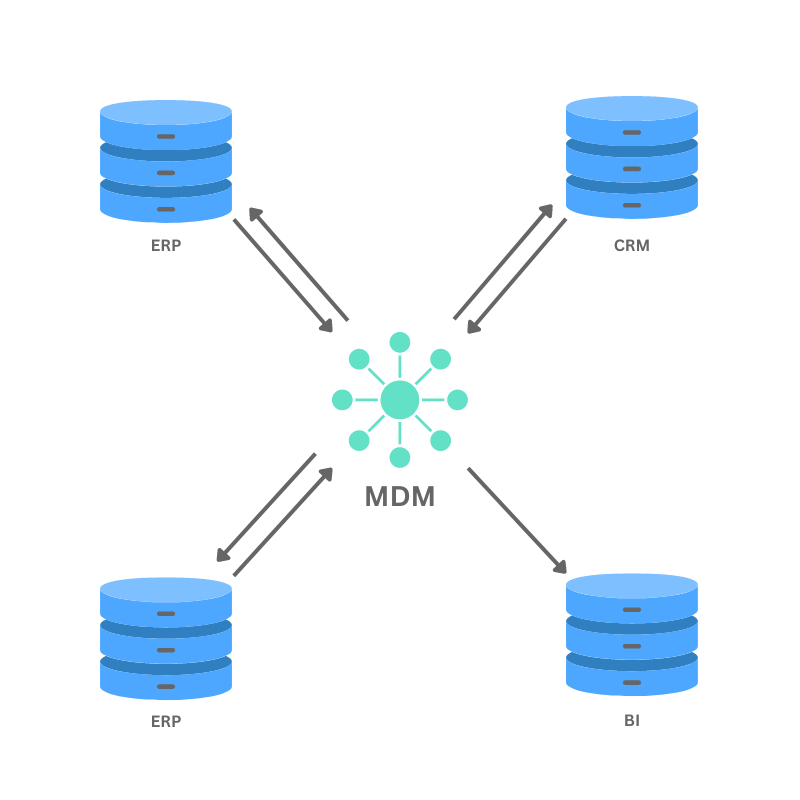Master Data Management (MDM) Implementation Styles
Master Data Management (MDM) plays a vital role in modern organizations by ensuring consistent, accurate, and reliable data across various systems and applications. MDM provides a framework to manage and govern master data, such as customer information, product data, and employee records. Four foundational MDM styles have emerged as popular approaches to managing master data
Low-code data integration
Finally, a Master Data Management platform that anyone can use. OpenAI integration lets any business user master data without technical expertise - just type a plain language prompt, hit enter and it's done.
Consolidated MDM
Consolidated MDM, also known as Analytical MDM, focuses on integrating and harmonizing master data from multiple sources into a single, authoritative view.

Registry MDM
Registry MDM focuses on maintaining a centralized index or registry of master data across multiple systems without physically consolidating the data.

Centralized MDM
Centralized MDM involves establishing a centralized repository for master data while allowing individual systems to maintain local copies for operational purposes.

Co-existence MDM
Co-existence MDM recognizes that different domains or business units within an organization may have unique requirements for managing master data.

View our MDM Implementation styles white paper for the complete overview
Deciding which implementation style is right for you
Understanding your data landscape
Assess your organization's data landscape, including the types of master data you need to manage, the sources of data, and the data integration requirements. Consider the complexity and diversity of your data environment to determine which MDM style aligns best with your needs.
Evaluate organizational structure
Take into account your organization's structure and how data is managed across different departments or business units. If there is a need for centralized control and governance over master data, consolidated or centralized MDM styles may be more suitable. If independent units require autonomy and flexibility, co-existence or registry MDM might be a better fit.
Define business requirements
Identify your organization's specific business requirements and goals. Determine the level of data consistency, governance, and integration needed across systems. Consider factors such as data quality, real-time access, scalability, and autonomy for business units. The chosen MDM approach should align with these requirements.
Assess data governance capabilities
Consider your organization's data governance capabilities, including policies, processes, and resources. Evaluate whether you have the necessary infrastructure and expertise to support a particular MDM style. Some styles, such as consolidated MDM, may require more robust data governance frameworks than others.
Analyze integration & interoperability
Evaluate the level of integration and interoperability required across your systems and applications. If real-time data synchronization and access are critical, registry or centralized MDM styles can provide the necessary capabilities. If you have existing systems with data dependencies, consider the impact of implementing a particular MDM style on those systems.
Budget & resources
Evaluate the budget and resources available for implementing and maintaining the MDM solution. Consider the cost implications of each MDM style, including software, infrastructure, and ongoing maintenance. Determine whether you have the necessary resources and expertise to implement and manage a particular approach effectively.
Scalability & future growth
Consider your organization's growth plans and scalability requirements. Assess whether the chosen MDM approach can accommodate future data sources, applications, and business units. Look for flexibility and extensibility in the MDM solution to support evolving needs.
View our MDM Implementation styles white paper for the complete overview
Discover features
See all of the powerful, Azure-integrated CluedIn features and capabilities
Experience CluedIn
Book a discovery call and see exactly how CluedIn can support your team.
CluedIn & Microsoft Fabric
Get ready for AI and advanced analytics with native Master Data Management.
Inbuilt and high compression for low storage footprint
Duis aute irure dolor in reprehenderit in voluptate velit esse cillum dolore eu fugiat nulla pariatur. Excepteur sint occaecat cupidatat non proident sunt in culpa qui officia deserunt mollit anim id est laborum.
Inbuilt and high compression for low storage footprint
Duis aute irure dolor in reprehenderit in voluptate velit esse cillum dolore eu fugiat nulla pariatur. Excepteur sint occaecat cupidatat non proident sunt in culpa qui officia deserunt mollit anim id est laborum.
Inbuilt and high compression for low storage footprint
Duis aute irure dolor in reprehenderit in voluptate velit esse cillum dolore eu fugiat nulla pariatur. Excepteur sint occaecat cupidatat non proident sunt in culpa qui officia deserunt mollit anim id est laborum.